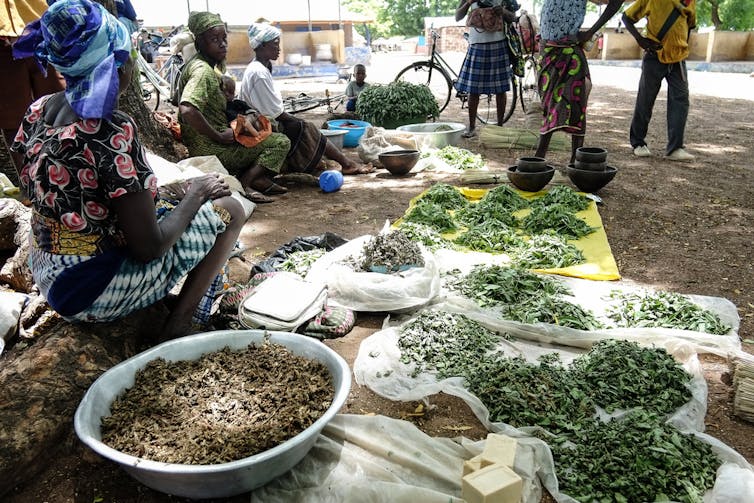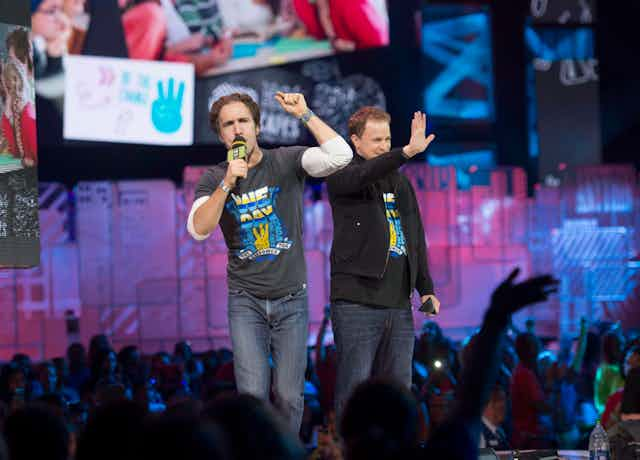The political uproar surrounding WE Charity’s $912-million youth volunteer contract with the federal government has obscured a more fundamental question about WE: do its international development efforts help the communities in which it works?
From our perspective as global health specialists, WE’s development model has some clear weaknesses that could be reflected in high costs and limited impact. At the same time, its voluntourism business, one of the cornerstones of its work, conflicts with a push by those in the field of international development to decolonize global health and international development.
WE’s roots in international development
The Toronto-based group has grown into one of the largest charities in the country since its inception 25 years ago. WE Charity raised $28.1 million in donations last year, including a $1.6 million subsidy from the federal government.
Read more: COVID-19 has exposed the limits of philanthropy
WE has tended to measure success in terms of how many schools it has built and the number of volunteers it has sent overseas through its affiliated social enterprise, ME to WE, which is now up to 42,000 according to the organization.
Yet international development experts take the view that metrics around implementation, health and social well-being, quality-of-life, sustainability and cost-effectiveness are far more critical for understanding impact. But assessing an organization’s value along these lines requires significant investment in measurement and evaluation.
Much of the debate surrounding WE in international development circles also centres on whether it is a charity, which offers money and other resources, or an international development organization, which emphasizes local ownership, collaboration and sustainability.
Rebecca Tiessen, professor of international development at the University of Ottawa, explains the distinction in a recent blog post about what she calls WE’s “identity problem.” Tiessen says that many international development organizations in Canada are registered charities for tax purposes, but “seek to distance themselves from the charity model, applying more appropriate terms such as solidarity or international cooperation to define themselves and the work they do.”
It takes more than a village
WE’s main international initiative, WE Villages aims to improve communities’ access to water, food, education, health and income opportunities. WE provided $26.8 million last year to 86 villages in nine countries, such as Ecuador, India and Kenya.
According to a 2012 report compiled by WE Charity and Mission Measurement, WE Villages has a similar design to an international development program called the Millennium Villages Project. WE described it as “one of those most well-informed, advanced approaches to development.”
American economist Jeffrey Sachs launched the decade-long Millennium Villages Project in 2005. The project involved interventions in 14 villages across 10 countries, including building health centres and schools, improving access to clean water and toilets, scaling up vaccination programs, distributing fertilizer to farmers and providing bed nets to prevent the spread of malaria. Ultimately, the project aimed to achieve the Millennium Development Goals through a multitude of interventions within each village, with some estimating that US$600 million was invested over a decade.
But the project became one of the most contentious issues in global health, with many development experts concluding that it was futile. Nina Munk, a Canadian journalist, noted in her 2013 book The Idealist that the interventions designed by Sachs and his Columbia University colleagues represented a myopic view of the local context.

For instance, according to Munk, those overseeing a Millennium Villages Project in Ruhiira, Uganda, encouraged farmers to grow maize instead of plantains, a staple of the diet in this area. There were high yields of maize but no demand. In turn, much of it went to waste instead of having farmers generate a profit.
An analysis by GiveWell, which gauges the impact of charitable activities, concluded that the Millennium Villages Project was probably no more effective than simply distributing insecticide-treated bed nets to more people at a fraction of the cost. Bed nets cost less than US$2 per person per year, while the Millennium Villages Project costs US$72 per person per year with a similar effect on curtailing child mortality.
International development goes beyond charity
WE Charity measures its impact — at least in its public communications — by detailing how much infrastructure and resources it has given to WE Villages. For example, it says that it has built 1,500 schools and classrooms, helped one million people gain access to clean water and supplied 30,000 women with tools for economic self-sufficiency.
However, such numbers risk blurring the lines with its international development work and its true impact. This makes it difficult to understand if WE Charity is truly a development organization, or a charity that simply donates resources to communities.

A fundamental issue is that the charitable approach does not usually work without partnerships and capacity building, with a goal of sustainability from the start. A BBC blog about the ethics of charities expands on several of the issues with this approach. Charities often target symptoms of the problem, in this case poverty, rather than root causes. They often favour quick fixes that get in the way of real progress.
Voluntourism can be damaging
ME to WE Trips is another source of confusion. Through ME to WE, volunteers travel to WE Villages, mainly to help build schools and, more recently, to establish medical clinics. WE says that tourism is essential in supporting the income opportunity pillar of the WE Villages model.
While the social enterprise of voluntourism is undoubtedly a creative approach to finance the charity, with volunteers paying upwards of $4,000 per short-term trip, many researchers, former staff and even past volunteers have decried ME to WE for perpetuating the stereotype that privileged individuals are more skilled and knowledgeable than people in the countries they are trying to help.
Read more: How a rock concert inspires social change
Writing in the Huffington Post, Rebecca Klaassen, who has taken part in a ME to WE trip, questions WE’s “white-saviour problem.” Reflecting on her own experience, she says that “few [volunteers] stopped to question whether their international programming lived up to expectations in contributing to ethical, sustainable change.”
All in all, WE Charity’s work appears to be far-removed from the current international development landscape. Instead of spreading its wings ever more widely — the latest example being the Canadian student grant program — WE should concentrate first on getting the basics of its charity right.

